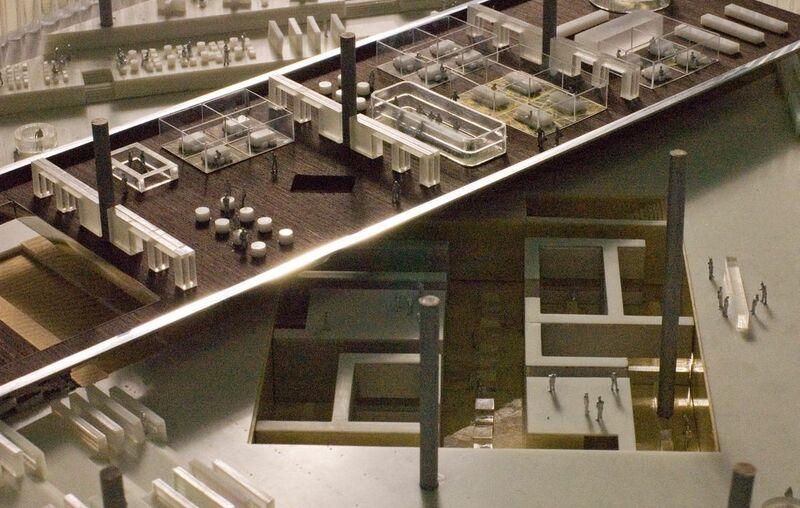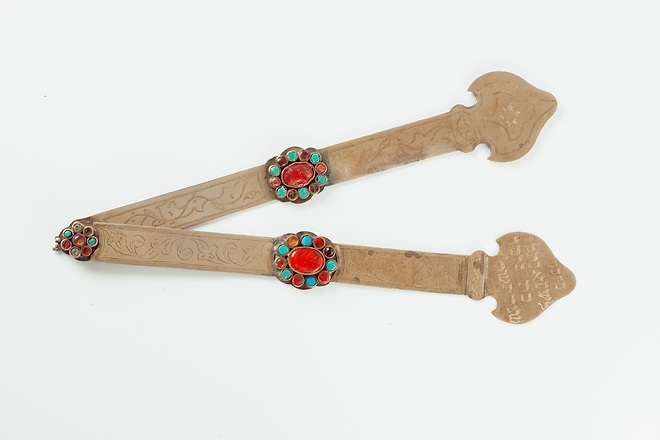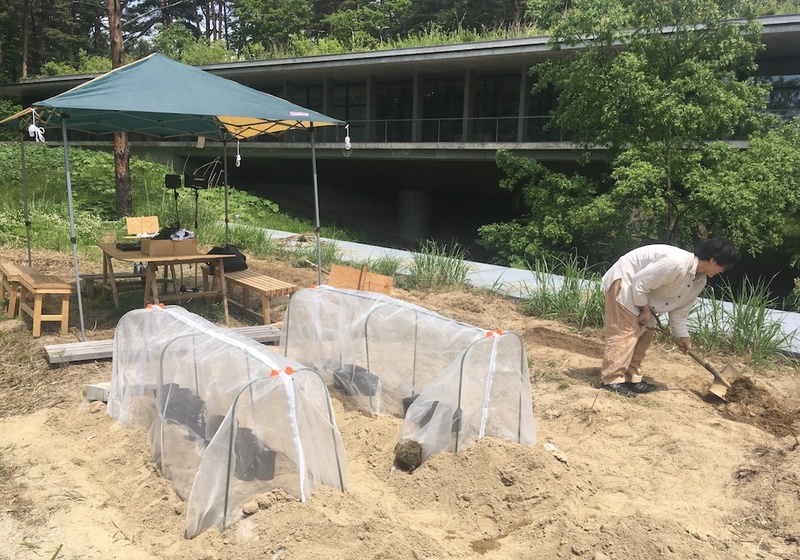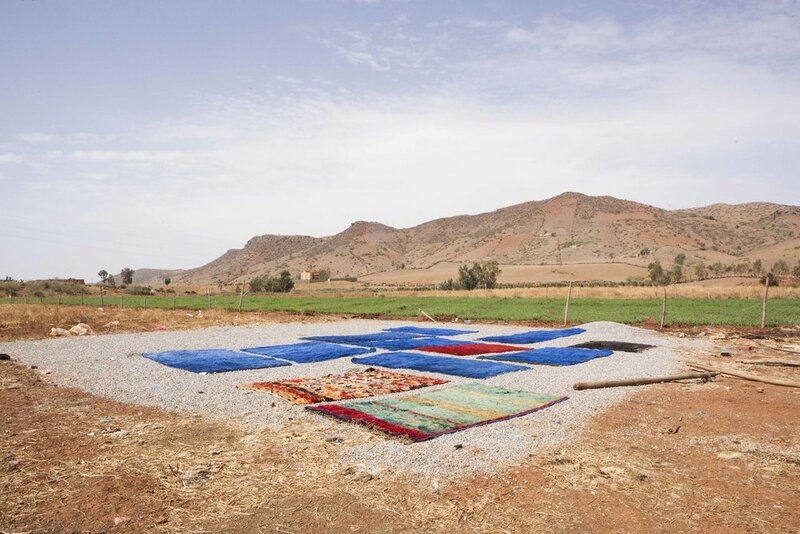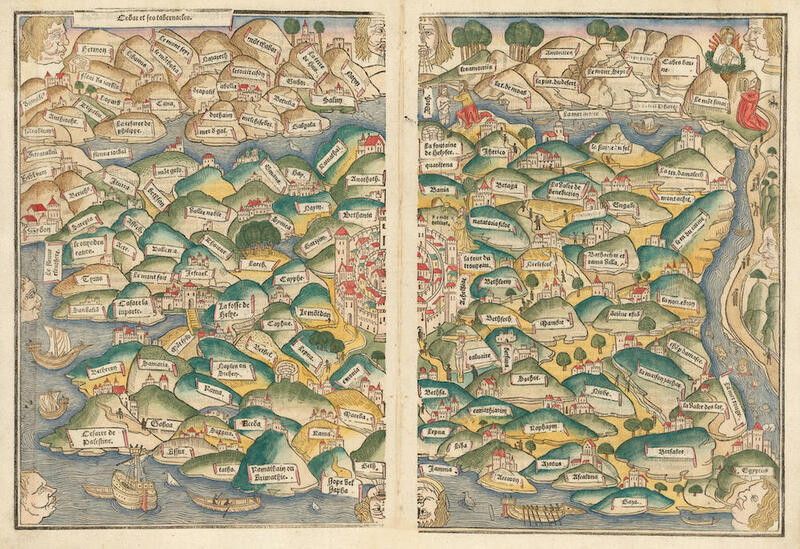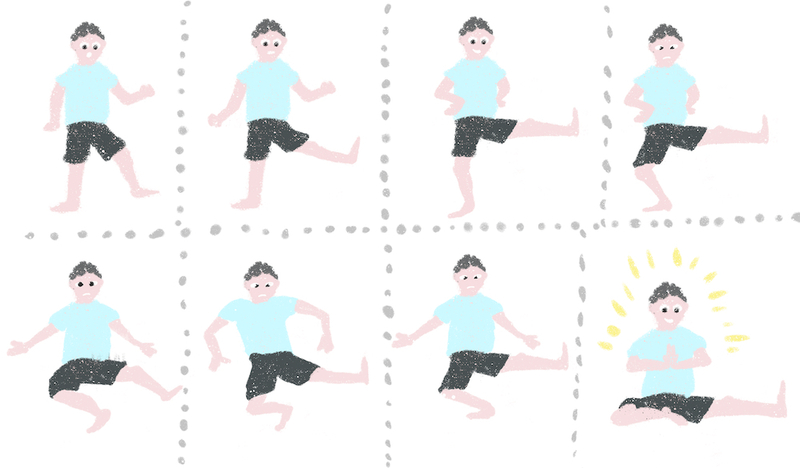
The 2017 film tells the story of Amer and Sana Haddaj, Lebanese musicians working for the Palestinian Broadcast Service in Ramallah who, in 1947, were invited to perform in the United States. Due to the Nakba of 1948, they were unable to return to Palestine and instead made a living performing Arabic songs that often told of longing for their homeland. As the issues of mass relocation and the maintenance of one's own culture in migration become more pressing with each passing day, the film presents a particularly pertinent example. The EastEast screening of the film took place from the 23rd to 30th of November, 2023 and was accompanied by the text below, a conversation between Rasha Dakkak and Foundland Collective about their working methods and the need to reclaim personal histories that question dominant narratives.
RD: What made Amer and Sana Khaddaj's story stand out among all the artifacts and documents you came across while at the archive? Could you say more about your selection process and working methods?
FL: The story of Amer and Sana Khaddaj was fascinating to us for many reasons. Their story was well represented in the archival storage boxes through photographs, documents, and recordings, however not much is publicly known about their life story and music. The work of the couple contributed to the flourishing of traditional Arabic music within the Arab American diaspora scene of the time and yet their story did not represent the stereotypical entrepreneurial success story like many others from the archive. In fact, despite the fair amount of fame that Amer and Sana achieved through their traveling, singing, and musical performances, the last part of their lives was spent in suburban Detroit where they raised a family and also where Amer was tragically killed in the 1980’s.
Originally from Lebanon, they had performed in Palestine for some time before heading to the United States. Throughout their career, they performed what they perceived as songs and poems from their “homeland,” mostly through notions of nostalgia and longing. We found their performance of a partially fictional identity interesting in a diasporic context, as a bridge between place and generations. Through the original letters found in the Khaddaj collection we could read through correspondence with friends in Palestine during the 1948 Nakba period. Reading through personal experiences of conflict of the period offered a unique glimpse into a pivotal shift in the history of the region and an understanding of what musicians of the time experienced. As an artistic duo ourselves from different cultural backgrounds, we could relate to Amer and Sana through the notion of performing our own identity in different places through traveling and in conversations. We could imagine how the couple adapted and perhaps experimented with their performances in relation to their audience’s expectations.
One of our core priorities as artists is to offer new perspectives on the identity of the migrant.
RD: To some, archives may appear to be large and impenetrable structures. How would you describe your experience at the Smithsonian Institution's National Museum of American History in Washington, DC, and what materials were available to you?
FL: The Naff archive is organized primarily in order of family names and there is not much written about the context of the collection, such as who was included or excluded, and why. The collection contains more than 450 oral histories, 2,000 photographs, and more than 500 artifacts, so we were admittedly overwhelmed by the sheer volume of materials. The timeframe for the research took place between 2015 and 2016. We were lucky to be supported by the Smithsonian Artist Research Fellowship which enabled us to return to the archive each year and work for a period of three focused weeks each year. The routine of visiting the archive and deciding which boxes of material to request was grueling but productive and exciting. The lengthy-time investment in the archive enabled us to select a smaller pool of material and dive into more detail, relook at material, and document and digitize it. We needed to work intentionally and efficiently to request useful material. We worked with the archivists in the library who located the necessary boxes with useful content including audio recordings, photographs, documents, books, publications, newspapers, and personal documents. The material was both in English and Arabic, making it essential to locate important fragments to allow for documentation and translation.
RD: After learning about “Little Syria,” what parallels can you draw about the first wave of Arab immigrants to the United States that could be helpful in a time when migration is so prevalent?
FL: The historical area of Manhattan known as “Little Syria” marked the starting point for migrants to the United States from the Levant region from around 1890. Thousands of immigrants from Greater Syria—today’s Syria, Lebanon, Jordan, and Palestine—arrived in New York City in the late 1800s, many of whom were escaping religious persecution and poverty under the Ottoman Empire. Most Syrian immigrants began as peddlers, and the neighborhood was full of Arab coffee houses, pastry shops, smoking parlors, dry goods merchants, and silk stores. Unfortunately, in the early 1940s, the demolition phase of this neighborhood began with the construction of the Brooklyn-Battery Tunnel, causing many residents to move out of the area and thus the disappearance of this rich vibrant community. Although a few traces of the original buildings remain, today the rich community is not directly visible along Washington Street. In the years thereafter, migrant communities could be found in hubs around the country, such as in and around Detroit and Chicago, to name a few. Alixa Naff who started the Naff archive collection began in the 1970’s, piecing together historical material and traveling to different communities to expand her collection. Her motivation when collecting oral history from many groups, and especially Arab American women, was to counter the anti-Arab sentiment that emerged in the US in the late 1960’s. Alixa Naff wanted the American public to better understand the rich history of her Arab American ancestors through collected personal testimonies. We very much support alternative forms of documentation and storytelling that can offer perspectives outside of that easily accepted media portrayal of the migrant. Without Naff’s initially unofficial and extremely subjective archive, there would be very little evidence of the lived experience of early Arab American migration.
Reading through personal experiences of conflict of the period offered a unique glimpse into a pivotal shift in the history of the region and an understanding of what musicians of the time experienced
RD: Did you share your research findings with the archive after completing this phase of the project? Do you see your work on this archive influencing their working methods? What can institutions learn from the artistic repurposing of their collections?
FL: We have shared our findings in presentation formats in 2016 for a live audience and again in 2021 for an online audience on the invitation of Carol Huh, curator at the Freer Sackler gallery in Washington DC. The resulting work has been presented as an exhibition installation and video in film festivals and exhibition spaces around the world and we have been very happy to publicize the story of Amer and Sana, but also to make the archive known to many new people and students in Europe, the Middle East, and beyond. There is not much known about the Arab American diaspora within the Middle East and through the digital version of the Naff archive many students and scholars have become familiar through our work. We cannot say if our working methods have influenced the archive itself and the way it operates, probably not. We appreciate that more of the collection is available online to download in good quality for a larger audience. The artistic fellowship at the Smithsonian is very supportive in enabling more people to work on interpretations and alternative narrations of the archival materials.
RD: Looking at Foundland's work, it's evident that you've dabbled with several archiving scenarios, from digital to oral, and so on. When you have access to physical artifacts, as you did with this project, how would you say the process of finding, digging, and picking up on details differs?
FL: Having the opportunity to work with physical archival documents within the context of an official archive means that there is limited time to spend with the original artifacts and a more focused way of approaching them. Often we had limited time to be present with the objects and that meant an efficient selection process was necessary to make sure to request the appropriate materials. In some cases, only one unique copy was available, making verification easier too. In contrast, dealing with digital archives, especially when looking at material that is coming from different unverifiable sources, there might be doubts around verification and originality. Since 2018 we have worked on a project called Real-time History, which examines in detail a small selection of videos made by citizen journalists obtained from the open-source, Syrian-run, digital archive website called Syrian Archive (https://syrianarchive.org). Such archives have an extensive collection that is available online, opening up the archive to a broad audience, but, despite easy accessibility, in our experience it is still useful to narrow the selection process to keep the scope manageable when working. In the processing phase, when relooking at the material and deciding how to use it as a storytelling tool, we were mindful not to place too much focus on the nostalgic aesthetic that tends to be connected with archival material objects. We were faced with the challenge of using original fragments for storytelling, but also to connect them to a contemporary context of migration.
RD: We live in a time when the value of archives, open-source, and accessibility is becoming more widely acknowledged. Individuals are attempting to reclaim narratives on their own; how do you see this affecting the role of institutional archives?
FL: It is important to maintain alternative collections and storytelling to make sure that the dominant narrative is not entirely controlled by one particular party. We believe it becomes dangerous when the commonly accepted narrative is controlled only from one side, as we have seen from hundreds of years of colonial rule. Related to the conflict zones in the Middle East, we have witnessed open-source material being used for the documentation of human rights abuses, such as the online digital Yemeni archive and the Syrian archive for example. Unofficial collections of videos and images collected by citizen journalists are the only available material evidence of certain events since there is often a complete absence of journalism. The unofficial archives therefore directly affect other sectors such as NGO organizations, lawyers, and policymakers, who adapt to taking “unofficial” material seriously. If we refer to the building of court cases connected to the Syrian conflict, there would be very little material if it were not for the tireless work of unofficial journalists who have often published on platforms such as Youtube. This is a new and underdeveloped image ecology and digital archive source that still faces many issues, such as immense data storage and accessibility, fake news, and the effects of AI.
Regarding the influence on formal archives held by museums and other art institutions, the last few years have seen increased reflections and opening up of institutions to include previously excluded voices and stories. Museums and cultural custodians of all kinds are compelled to re-evaluate what is shown and how work is narrated to reflect and include decolonial interpretations and framings. New archives emerge, such as the Amsterdam-based Black Archives, making accessible the marginalized history of black emancipation movements and individuals in the Netherlands. The existence of such archives is valuable and should be supported and sustained.
We believe it becomes dangerous when the commonly accepted narrative is controlled only from one side, as we have seen from hundreds of years of colonial rule.
RD: In terms of preservation and longevity, how do you see the future of the counter-archives you're creating?
FL: We are grateful that some of our work is currently stored and maintained in important collections in the Netherlands. The New World; Episode One video, for example, is preserved and distributed by LIMA media art archive in Amsterdam. Our work Groundplan Drawings is part of the permanent collection of the Stedelijk Museum in Amsterdam. Renewed awareness within cultural institutions in the Netherlands with the aim of decentering colonial and previously suppressed narratives is a fantastic leap forward, and we hope this will continue. The “counter-archives,” as we call them, that we have been working on since 2011, no matter how small and personal the gestures, we believe contribute and respond to important moments in history, incorporating lesser-known stories. Moving forward, we would be interested in expanding our working network and finding ways to preserve and make work accessible in the Middle East and Global South.
The interview took place in July 2021 and was revised in September 2023.
